Warszawa II (17 page)
Authors: Norbert Bacyk
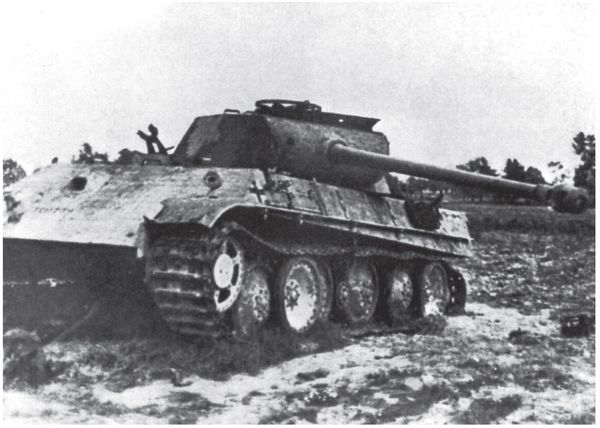
A Panther tank ausf G from the 19th Panzer-Division knocked out by Polish forces somewhere in the vicinity of Studzi-anki near Warsaw, August 1944.
Another knocked out Panther tank, ausf G from 19. Panzer-Division in the vicinity of Studzianski near Warsaw, August 1944.
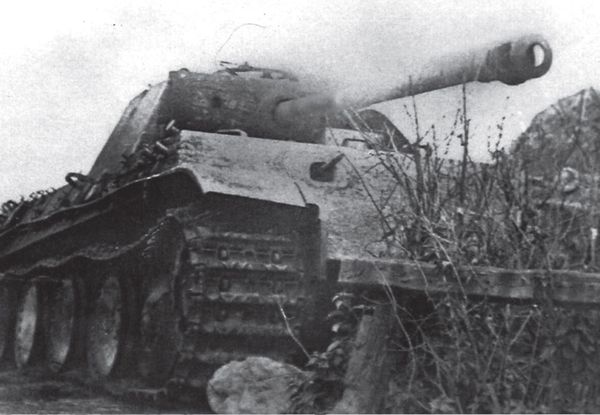
A Panther ausf G hailing from the 19th Panzer-Division acting as a troop transport to a machine gun detachment disembarking somewhere east of Warsaw, August 1944. (All photos: Leandoer & Ekholm archive)
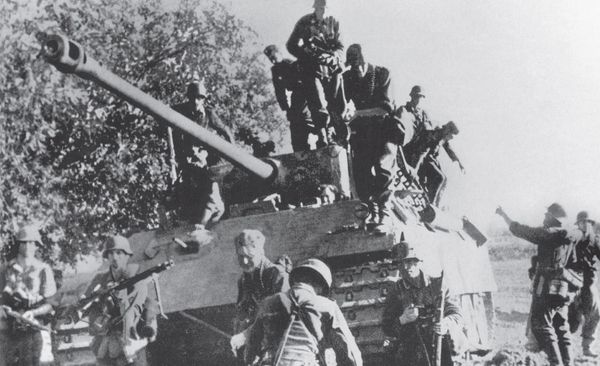
On the same day, further south, the 70th Army carried out an offensive in the area surrounding the village of Zawady â at the same location where the zone of the 5th SS-Panzer Division “Wiking” and that of the 3rd SS-Panzer-Division “Totenkopf 's” had met. Though sustaining heavy losses, the attackers managed to take control of the villages of Zawady and Åosie, but they didn't succeed in crushing the SS-SOLDIERS defences at RzÄ
dza Brook and on the approaches to Radzymin. The rifle divisions from the 47th Army had great tactical success when they yet again drove out the Hungarian 1st Cavalry Division from its positions outside WoÅomin and were able to seize Ossów. Consequently, the Hungarian-German positions in WoÅomin itself were outflanked from the south. On August 28, the 129th Rifle Corps continued to attack in that direction, and advancing from the south and the east reached the former built up sector of WoÅomin which lay in ruins...
A Katyusha BM 13-16 on its way to the front outside Praga, August 1944 (Leandoer & Ekholm archive)
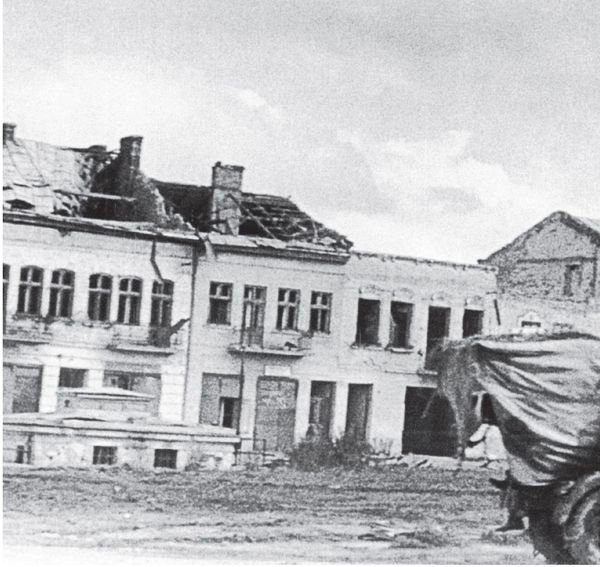
On August 29, nine rifle divisions from the 28th and the 70th Armies carried out the next violent storming of the 5th SS-Panzer-Division “Wiking” positions between Radzymin and the mouth of the Bug. Gille reported to the army staff on a massive infantry attack, in numbers never before witnessed, accompanied by waves of air attacks carried out by the IÅ-2 air assault wing, and heavy artillery fire. The 5th SS-Panzer-Division “Wiking's” right flank (SS-Panzergrenadier-Regiment 10 “Westland”), after several days of bloody fighting, was forced to retreat back to the village of Ruda. SS-Panzergrenadier-Regiment 9 “Germania” and Panzergrenadier-Regiment 73, however, had succeeded for the time being in maintaining control of the area around the outflow of the Bug River. To meet this situation, the Soviet 28th Army on August 30 increased its pressure on that area by launching periodic assaults against the exhausted enemy. On August 31, the 28th Army's troops controlled the entire southern bank of the Bug River and thus its troops could now press on towards the Narew, in the vicinity of Serock. The Germans retired to a line which stretched along Rynia-BiaÅobrzegi-Wólka RadzymiÅska. The 5th SS-Panzer-Division “Wiking's” withdrawal toward Rynia and BiaÅobrzegi created a gap between the IV SS-Panzer-Corps' positions and the area controlled by the 2nd Army; a gap which encompassed the west bank of the Narew between Zegrze and Serock. General Reinhart gave the commander of the 9th Army the order to occupy the area with Gille's corps. With the aim of ensuring the success of this mission â to begin with, a part of the SS-Panzergrenadier-Regiment 9 “Germania” was re-deployed.
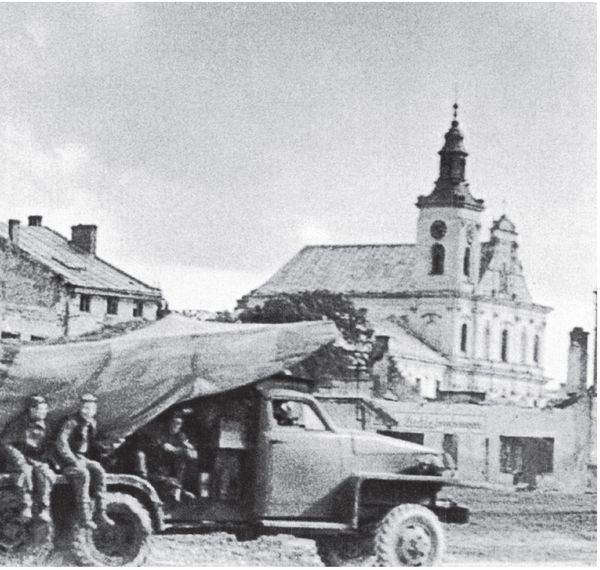
The 3rd SS-Panzer-Division “Totenkopf ” found itself under a sustained enemy attack that showed no signs of letting up. On August 30, 1944, the 96th and the114th Rifle Corps from the 70th Army attacked Radzymin simultaneously from both the north and the east. As on the previous day, the attack was accompanied by relentless waves of Soviet air attacks. The Germans were forced to withdraw from the villages of Mokre and Dybowo. The retreating SS-soldiers set up a new defensive line taking advantage of the destroyed buildings in Radzymin. But not even the devastating fire-power of their machine guns and mortars could hinder the Soviet infantry from entering the city. By that evening, when it had become evident that heavy counter-attacks supported by tanks had not improved the situation; the 3rd SS-Panzer-Division “Totenkopf” was finally forced out of Radzymin.
The day after; both corps from the 70th Army and one corps from 47th Army launched attacks along the Radzymin- Marki road and in the direction of Wólka RadzymiÅska. After the loss of Radzymin; Gille set the 5th SS-Panzer-Division “Wiking” in positions to defend attacks from the north, and the 3rd SS-Panzer-Division “Totenkopf ” from southerly attack, including the road towards Marki. Despite both merged Waffen-SS divisions (together with parts of the Panzergrenadier-Regiment 73 and the 1131st Grenadier-Brigade) being exhausted, they nonetheless continued to fight stubbornly and carried out almost daily counter-attacks with combat units drawn from the companies and battalions and with the support of armoured weapons. The Soviet soldiers also displayed great bravery and apparent unconcern with death. The fighting was therefore both hard and drawn out. The rate of advance for the 28th, the 70th, and the 47th Armies, as well as the 8th Guards Tank Corps, never exceeded more than 1 to 2 kilometres per day. On August 31, the 70th Army Corps together with the 47th Army's 129th Rifle Corps only exerted the energy needed to clean up Radzymin's southern suburbs and occupy the village of Cegielnia.
A battery of tracked howitzers, model “Wespe,” from an unidentified unit during combat in Poland, August 1944. (CAW)
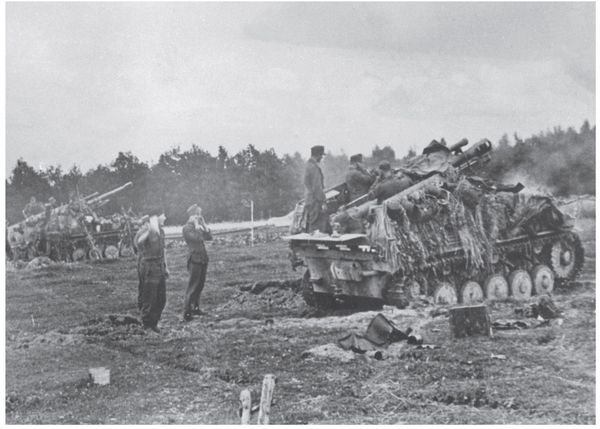
On September 1, however, the pressing Soviet forces resumed the fighting in earnest. The terrain favoured the defenders because, in village after village, building structures rested on both sides of the main road to Marki, and between Wólka RadzymiÅska and Struga spread a forest (which before the war had belonged to the village of Nieporet), small marshes, and a number of hills (heights numbered 104, 100 and 97 in the vicinity of SÅupno village). Early in the morning, after a heavy pre-assault artillery bombardment and air attack, the Soviet infantry commenced an offensive supported by tanks. After an entire day of heavy fighting, SS-Panzergrenadier-Regiment 10 “Westland” halted the enemy amidst the ruins of Wólka RadzymiÅska and on the muddy roads within the aforementioned forest, while units from the 3rd SS-Panzer-Division “Totenkopf” did the same thing along the line stretching between the villages of Struga and Nadma. The fact that the SS-soldiers reported â just in the area surrounding the village of SÅupno â a total of 24 destroyed enemy tanks can serve as proof of just how hard these battles were fought.
The pressure exerted by the Soviet troops against the IV SS-Panzer-Corps' left flank began to slowly taper off. Yet, on the 2nd and 3rd days of September, the 70th Army, and the 47th Army's 129th Rifle Corps renewed their attempts to attack and breakthrough the German positions between Wólka RadzymiÅska and Nadma, albeit without success.
The crew of a PzKpfw IV Ausf. H tank from the I SS-Panzer-Regiment 5 “Wiking” cleans the muzzle in the vicinity of Warsaw, August 1944. (CAW)
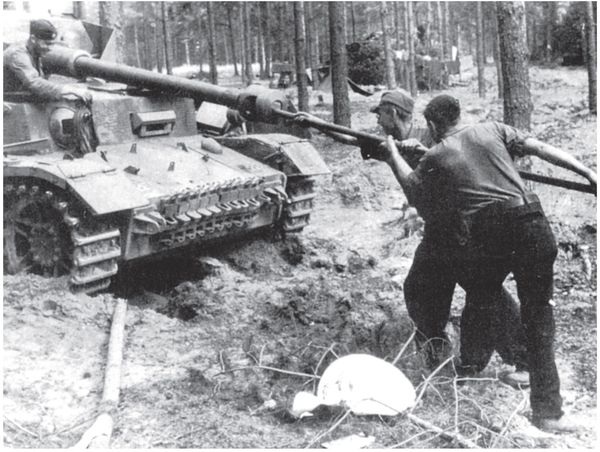
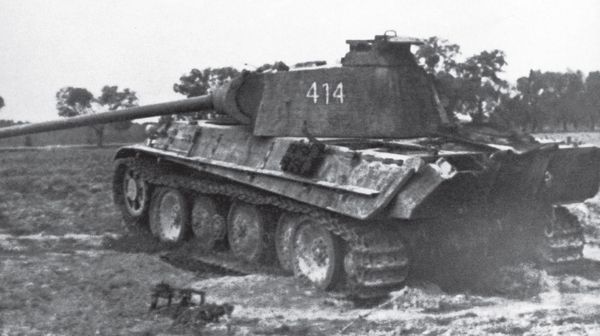
In August, the Russians sought to broaden the front by circling around Warsaw south of the city and building a bridgehead at the town of Magnuzew. The “Hermann-Göring” Division, together with other units, was pulled out of the fighting in Praga and re-deployed to meet this new threat,. Here they were confronted by the 1st Free Polish Tank Brigade. The result of this battle was a “draw” and the Russians succeeded in holding onto this location throughout the autumn of 1944.